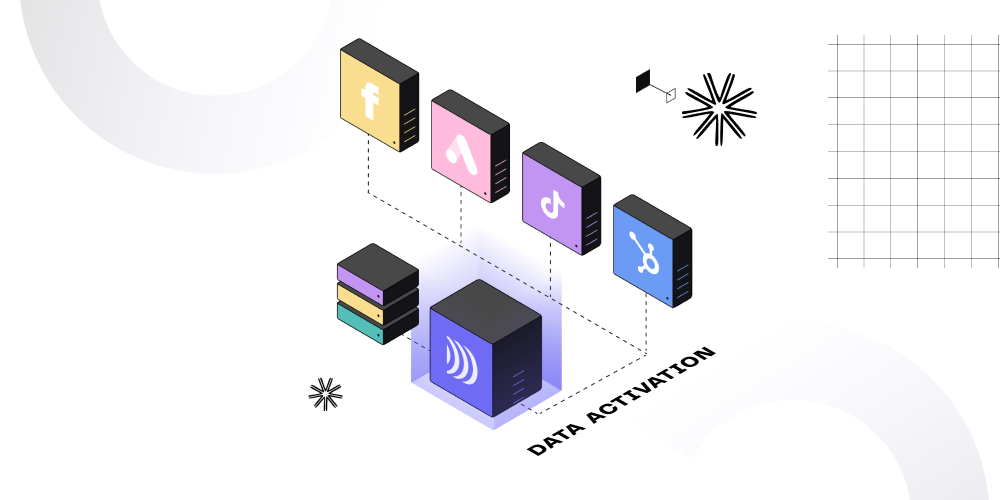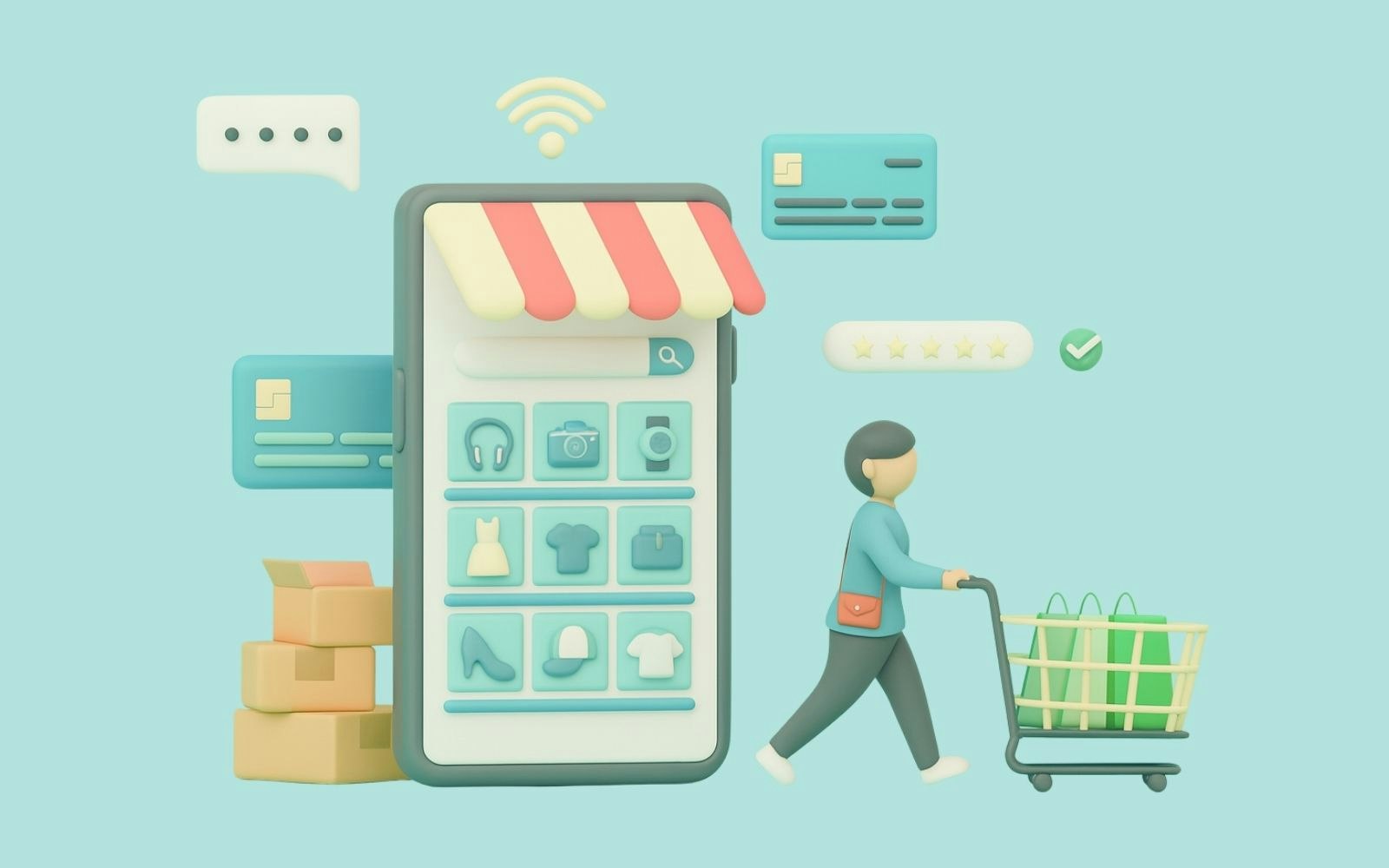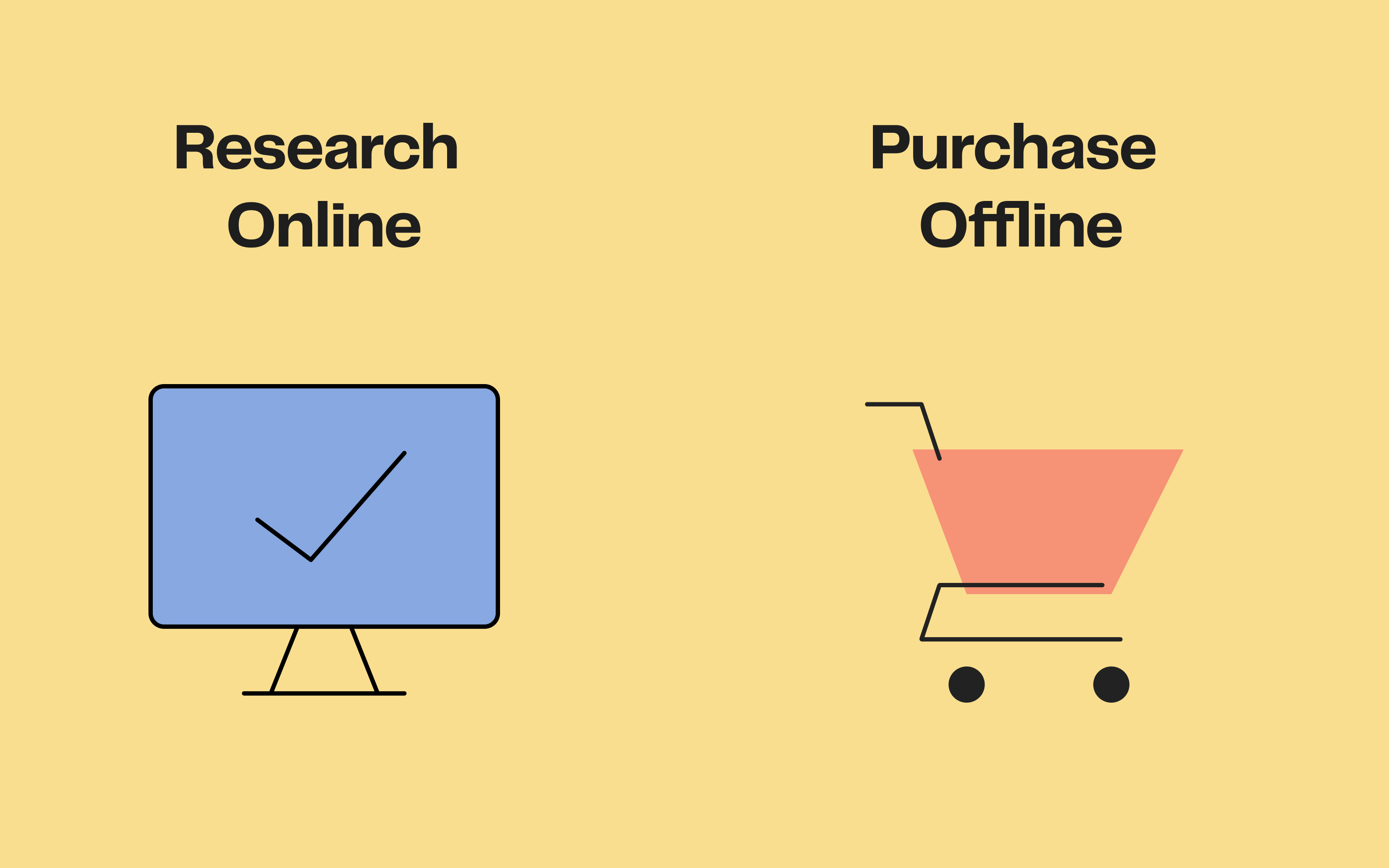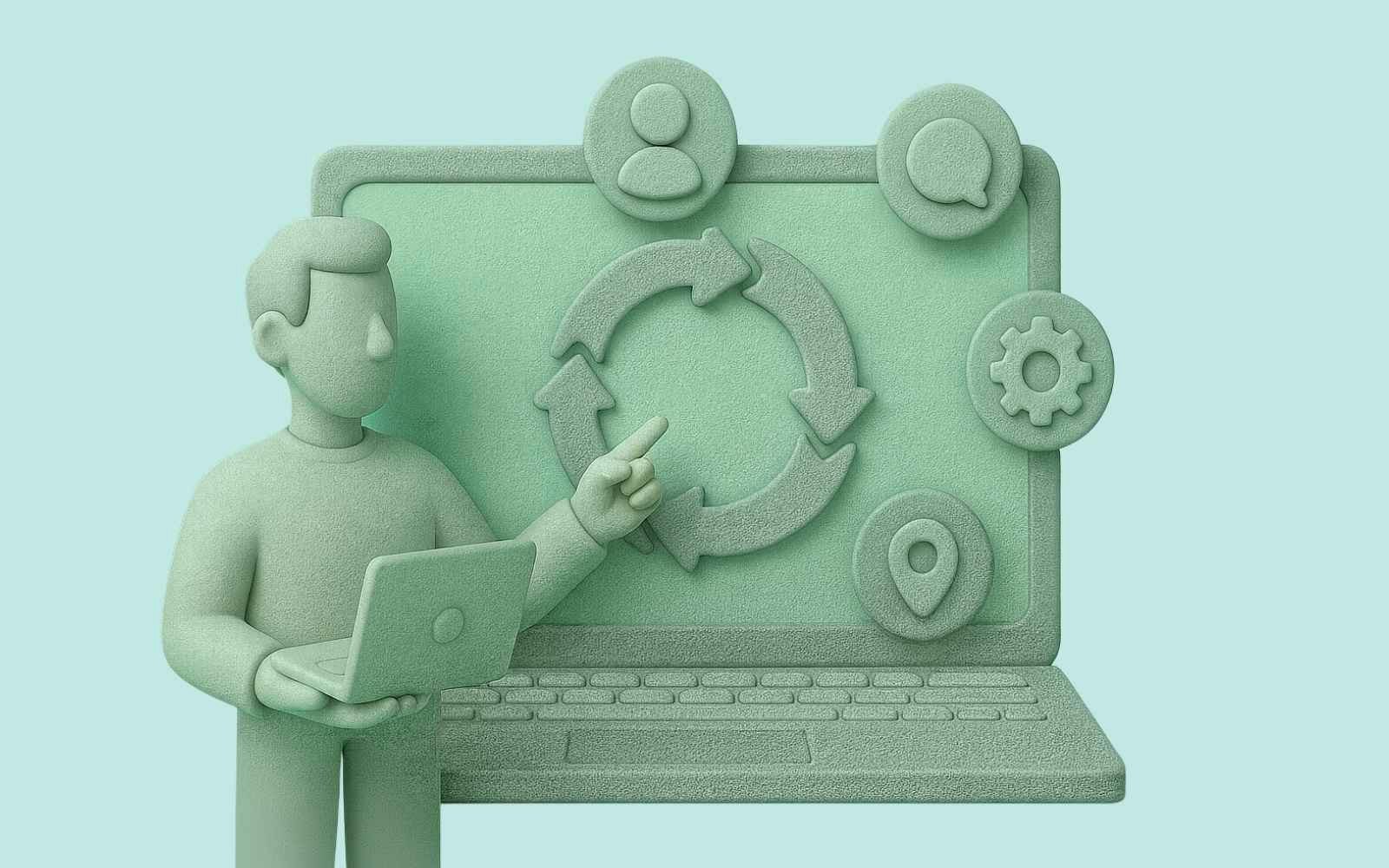
Lifecycle marketing, a powerful tool for data-driven brands
7min • Last updated on Sep 12, 2025

Olivier Renard
Content & SEO Manager
[👉 Summarise this article using ChatGPT, Google AI or Perplexity.]
More than 7 out of 10 consumers expect personalised interactions (McKinsey). And 76% say they feel frustrated when this isn’t the case.
Yet 63% of marketing leaders admit they struggle to deliver the right message, at the right time, via the right channel (Gartner) — sometimes even abandoning personalisation efforts altogether.
Customer lifecycle marketing is designed to meet that challenge. By relying on data, this approach turns every stage of the customer journey into a powerful driver of retention.
Key takeaways:
Lifecycle marketing involves supporting the customer through every stage of their journey, from acquisition to advocacy.
To deliver the right message at the right time, brands can leverage multiple channels: email, SMS, push notifications, social media, and onsite or in-app personalisation. It requires strong cross-channel consistency.
Closely linked to growth marketing, this strategy is especially effective when powered by first-party data.
A Customer Data Platform makes it easier to personalise across the full customer lifecycle. It unifies profiles, segments audiences, and activates data to trigger the right scenarios.
🔎 Discover what lifecycle marketing is all about, its core stages and key levers. How can data help streamline the customer experience throughout the journey and boost loyalty? 💡
What is Lifecycle Marketing?
Lifecycle marketing is a strategy that adapts interactions to each stage of the customer journey.
The aim is to guide the consumer effectively through each phase: awareness, consideration, purchase, retention, and advocacy.
This approach pursues three main objectives:
Acquire new customers,
Convert prospects into buyers
And retain existing customers to maximise their long-term value and turn them into brand advocates.
Lifecycle marketing takes a holistic view. It goes beyond tools like CRM or marketing automation by considering the customer’s evolution step by step, activating the right levers at the right time to enhance the overall experience.
Why is this approach essential today?
The rules have changed. The progressive disappearance of third-party cookies and data privacy regulations require businesses to rely more heavily on first-party data.
At the same time, ad fatigue has left consumers numb to generic messaging while expectations have never been higher. Customers want seamless, consistent, and personalised interactions.
Lifecycle marketing addresses these challenges directly. By delivering a better customer experience, it helps reduce churn and increase Customer Lifetime Value (CLV). In short, it turns the customer relationship into a genuine growth driver.
But this model only works if the business has reliable, accessible data. With a solid foundation in place, you can personalise journeys at scale and trigger the right scenarios at the right moment.
The key stages of the customer lifecycle
Lifecycle marketing follows the phases a consumer goes through in their relationship with a brand. Five stages define this journey:
Awareness: At this stage, the consumer becomes aware of the brand through digital campaigns, content marketing, or social media presence. It’s also the moment to capture early signals of interest.
Consideration / Acquisition: As the prospect explores their options (consideration), the brand aims to collect data and create engagement (acquisition). This might include a free trial, content download, or product demo.
Conversion: The prospect becomes a customer. They make a first purchase, subscribe to a paid plan, or sign up for a membership.
Retention: The goal is to maintain engagement and encourage loyalty — through reactivation campaigns, effective onboarding, incentives, or personalised content sent at the right time.
Advocacy: A loyal customer turns into a brand advocate. They might refer friends via a referral programme, share their experience online, or contribute to user-generated content (UGC).
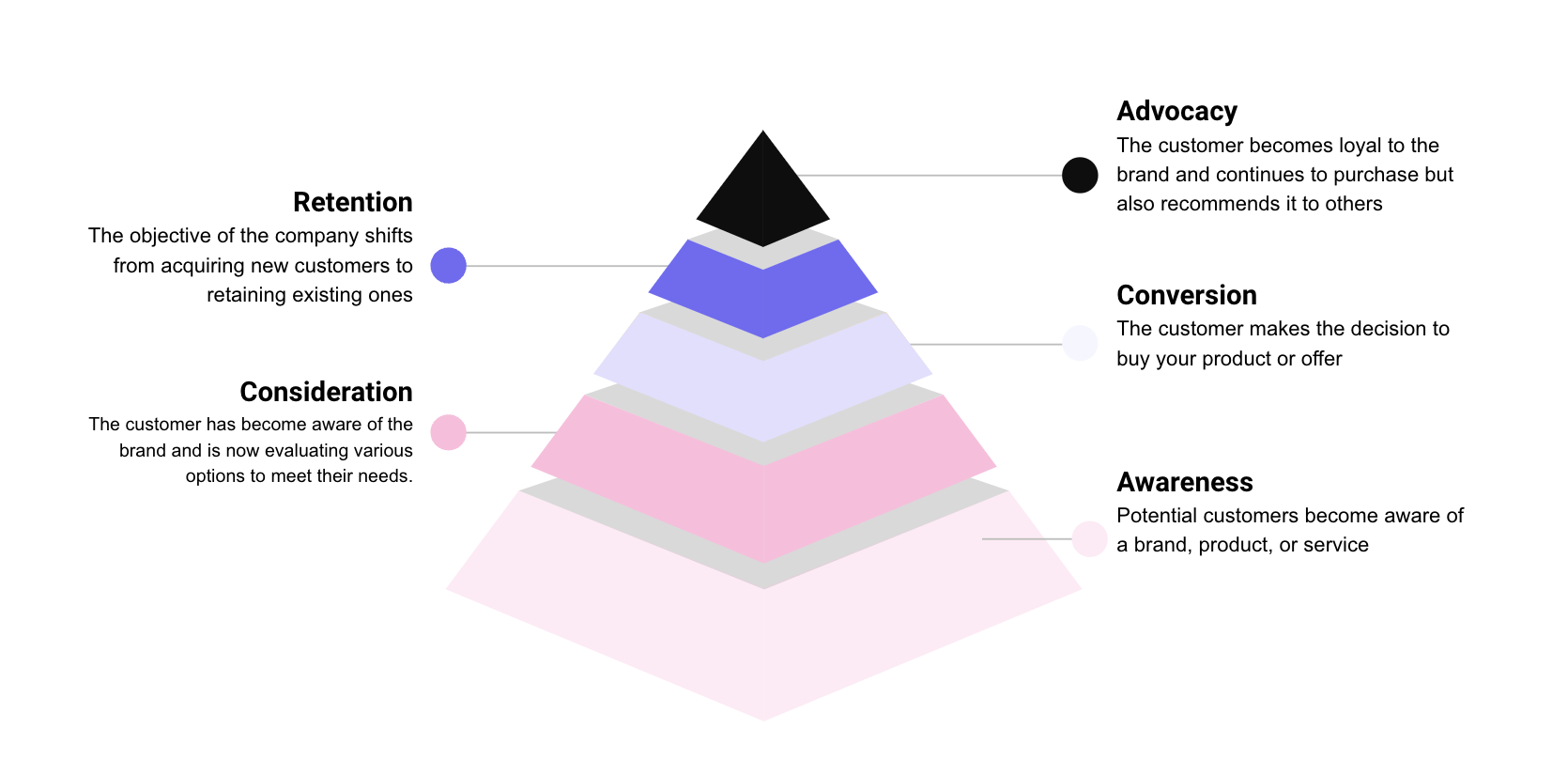
Customer journey: the different stages
Each stage is essential, but the success of the entire model relies on one key principle: leveraging collected data to to act wisely and personalise interactions.
Building an effective lifecycle marketing strategy
A successful lifecycle marketing strategy doesn’t happen by chance. It requires a clear methodology and smart decisions at each stage.
1️⃣ Identify and segment your audiences
Start with simple criteria (age, location) or more advanced ones such as RFM analysis or online behaviour. The more precise and dynamic the segmentation, the more relevant your messaging.
2️⃣ Define key moments
Certain triggers can activate specific scenarios: abandoned cart, inactivity period, birthday. A customer journey map helps visualise the full journey and pinpoint strategic touchpoints.
3️⃣ Align content and offers with each stage
A prospect in the awareness phase doesn’t expect the same content as a loyal customer. The former needs reassurance and information; the latter prefers exclusive perks or tailored guides.
4️⃣ Choose the right channel
Email, SMS, push notifications, social media: each channel plays a role. Choose based on the customer profile, lifecycle stage, and your objective.
5️⃣ Measure and optimise
No marketing strategy without regular tracking of key KPIs: retention rate, churn, Customer Lifetime Value (CLV), engagement (email open/click/conversion rates). These metrics are essential for continuous optimisation and improving multichannel performance.
Channels and levers in customer lifecycle marketing
Each stage of the customer lifecycle relies on specific channels. Success depends on strong cross-channel consistency: using the right lever at the right time.
Stage | Main channels | Example |
|---|---|---|
Awareness | SEO, social media, digital ads | Blog articles, acquisition campaigns |
Acquisition | Email, social media, targeted advertising | Welcome series, sign-up form, lead magnets |
Conversion | Onsite personalisation, retargeting, email | Abandoned cart reminders, limited offers |
Retention | Email, SMS, push notifications, in-app content | Reactivation campaign, personalised tutorial |
Advocacy | Loyalty programmes, social media, in-app | VIP offers, referral, UGC rewards |
Channels and examples by stage of the customer journey
Focus on the channels
SEO: Essential from the awareness stage. Informative content attracts prospects and supports consideration. Generative AI is increasing its role in brand discovery.
Email marketing: The historic channel for lifecycle marketing — still essential for acquisition, conversion, and retention, with one of the highest ROIs.
SMS & push notifications: Great for immediate impact — but must be used sparingly to avoid overwhelming users.
Social media: Builds communities, highlights brand advocates, and boosts promotion.
Onsite & in-app personalisation: Transform real-time experiences with tailored content and recommendations.
Multichannel automation: Ensures message consistency across the journey. A key enabler of a seamless, continuous experience.

Customer Journey Map Diagram
The role of data and CDPs
A lifecycle marketing strategy requires reliable, accessible, and up-to-date data. Yet in many organisations, information is scattered across different tools. This fragmentation limits both personalisation and marketing performance.
A composable Customer Data Platform (CDP) solves this by leveraging centralised customer data stored in a single source of truth (your data warehouse). It unifies profiles and enables the creation of dynamic segments to launch omnichannel campaigns, without technical skills.
This flexible, scalable approach suits both marketing and data teams. Here are two of the most common use cases among DinMo clients:
Reducing churn by identifying early warning signs and creating segments of inactive users to re-engage.
Improving ad targeting by leveraging first-party data and syncing it directly with Ads platforms via conversion APIs.
By unifying and activating your customer data, our CDP simplifies your lifecycle marketing strategy — enabling you to trigger the right scenario at the right time for the right audience.
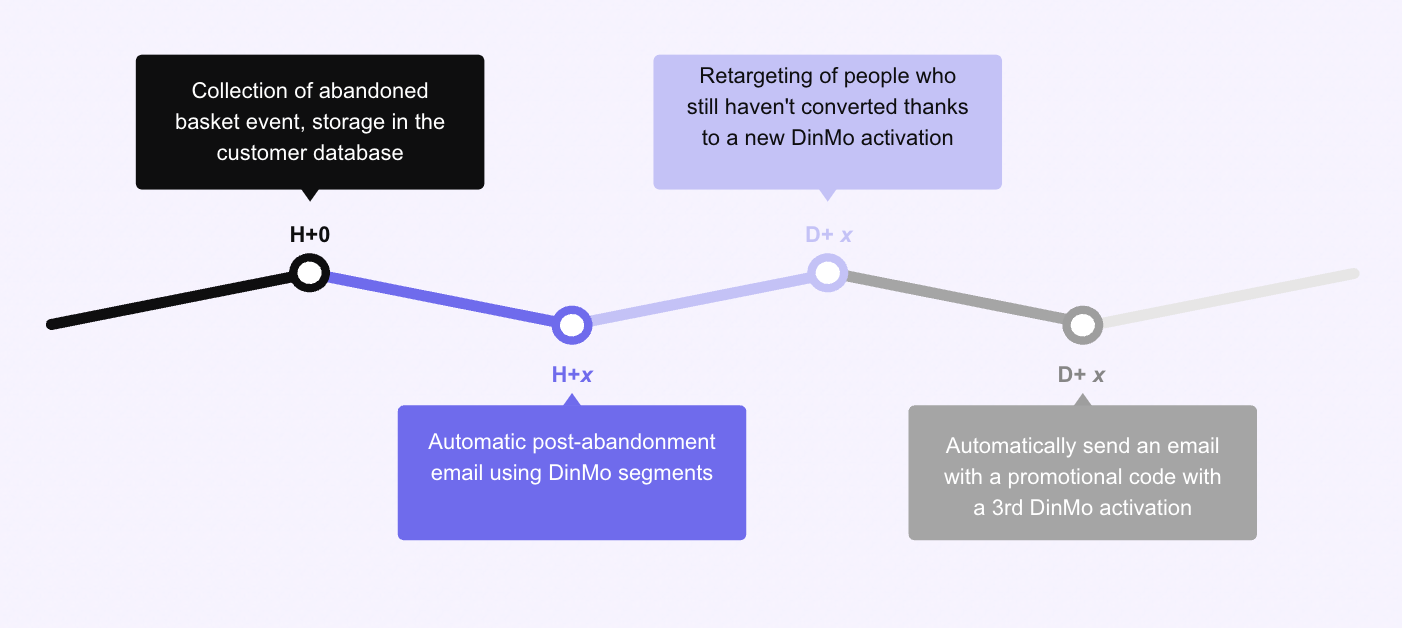
Illustration - Multicanal reactivation after cart abandonment
Campaign examples
Lifecycle marketing takes shape through concrete campaigns, each tailored to a specific stage of the customer journey.
Onboarding campaign: Following a sign-up, a progressive email sequence welcomes the customer, introduces key features, and offers personalised tutorials. The goal is to reduce time to value and encourage first use.
Win-back campaign: When a customer remains inactive for 30 days, a special offer or exclusive content can be triggered. This helps limit churn and re-engage interest.
Cross-sell and upsell: By analysing purchase history, it's possible to recommend complementary products or premium versions. Well-targeted personalisation increases average order value.
Loyalty programme: Frequent customers can be rewarded with points, VIP offers or a referral system. Beyond retention, these tactics also support advocacy.
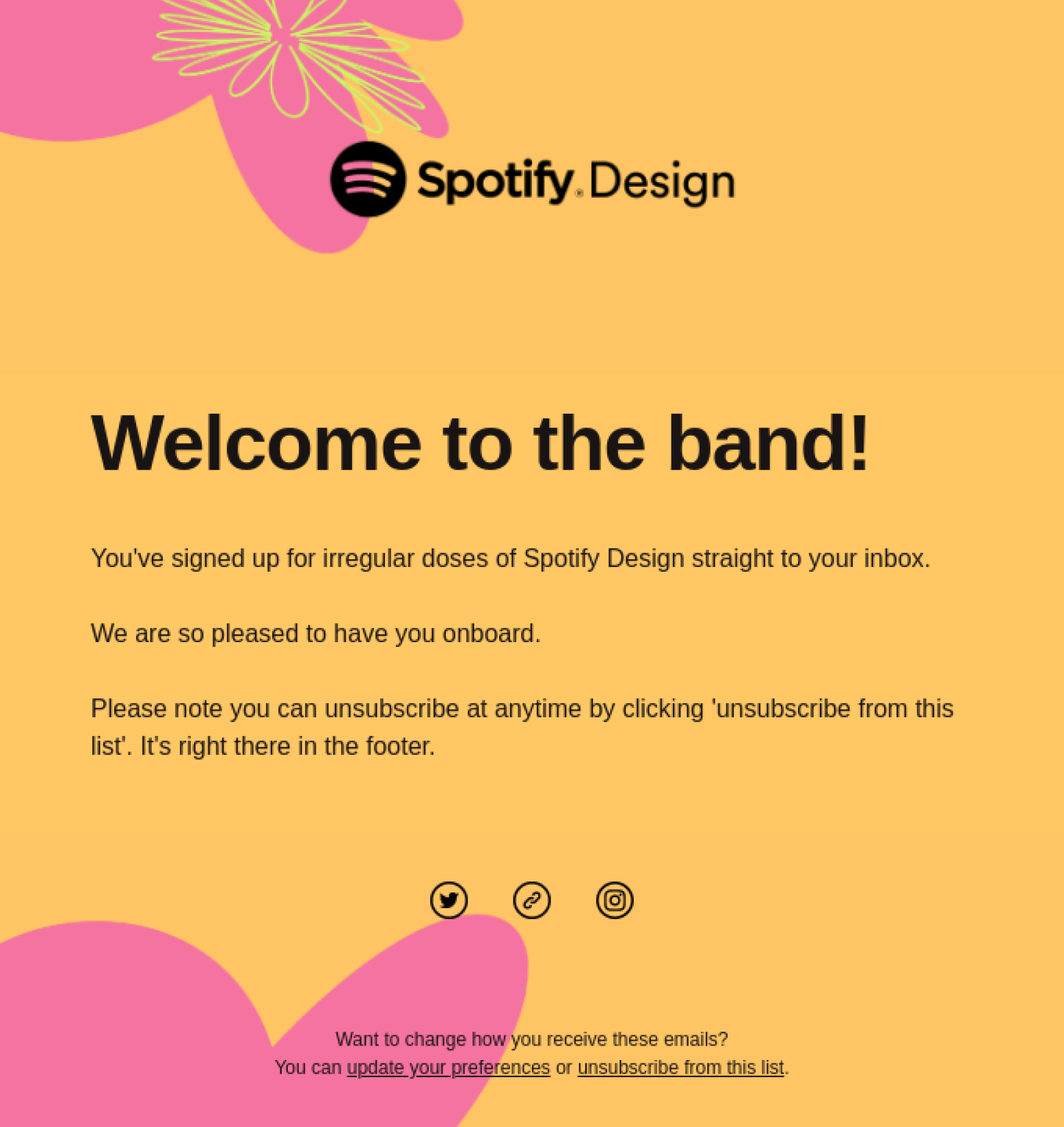
Example - Spotify welcome newsletter
Best practices and common pitfalls
A few simple rules can help maximise the impact of a lifecycle marketing strategy:
Best practices | Common pitfalls |
|---|---|
Personalise messages effectively based on the customer’s profile and behaviour | Overloading customers with overly frequent communications. |
Maintain cross-channel consistency to ensure a seamless experience. | Overlooking regulatory compliance, especially GDPR. |
Automate recurring scenarios while keeping a human touch in customer relations. | Failing to analyse campaign results and missing opportunities to optimise. |
Conclusion
Lifecycle marketing helps you offer a better customer experience, strengthen loyalty, and boost marketing ROI.
Whether it’s through effective onboarding, reactivating inactive users, or loyalty programmes, campaign success depends on personalisation. Conversely, over-solicitation and channel inconsistency are key pitfalls to avoid.
At DinMo, we believe the key to success lies in easy access to unified, reliable data. With our composable CDP, marketing teams can activate customer data at every stage of the lifecycle without relying on technical teams.
👉 Discover how DinMo helps you unlock the full potential of your data to transform your lifecycle marketing strategy.
FAQ
Which KPIs should you track first?
Which KPIs should you track first?
Key lifecycle marketing indicators include Customer Lifetime Value (CLV), churn rate, retention rate, and engagement metrics such as email opens, clicks, and conversions.
Tracking these KPIs helps assess campaign effectiveness and continuously optimise marketing performance.
What’s the difference between Lifecycle Marketing and Growth Marketing?
What’s the difference between Lifecycle Marketing and Growth Marketing?
Growth marketing focuses on overall business growth through experimentation and data. Lifecycle marketing, on the other hand, targets the customer journey by tailoring interactions at each stage.
Closely connected, the two approaches are complementary: one drives growth, the other builds long-term loyalty.

















